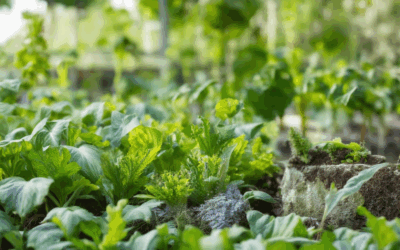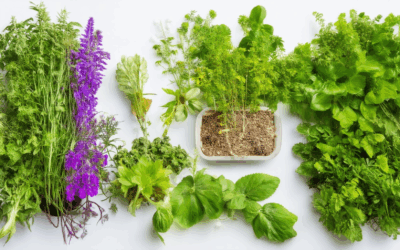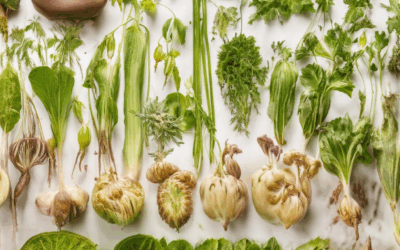Soil remediation is a critical process for addressing contamination and restoring healthy ecosystems, ensuring productive agricultural lands and safe living environments. By mastering effective soil remediation techniques, professionals and enthusiasts alike can significantly enhance crop yields, protect biodiversity, and promote sustainable practices. This comprehensive guide delves into the various methods of soil remediation, exploring everything from chemical and physical approaches to biological solutions that tackle different soil types and contamination levels. Whether you’re looking to understand the basics of soil remediation or dive deep into advanced techniques, this guide offers valuable insights, real-world case studies, and practical advice to help you achieve successful outcomes. From assessing soil conditions to estimating costs and timelines, we cover all essential aspects of soil remediation to empower you with the knowledge needed to address challenges effectively.
Methods of Soil Remediation
Soil remediation is a process aimed at improving soil health, reducing contaminants, and restoring fertility. There are several methods employed to achieve this, each addressing different aspects of soil degradation:
Physical Methods
- Tillage : Incorporating organic matter like compost or manure to improve soil structure and promote microbial activity.
- Heap Piling : Separating contaminated soil into piles to reduce contact with plants and allow natural decomposition.
- Soil Washing : Using water and chemicals to remove harmful substances, often followed by composting to restore nutrients.
Chemical Methods
- Lime Application : Adding agricultural lime to neutralize acidity and improve soil pH, which is particularly useful in acidic soils.
- Chemical Extraction : Using agents like chelating agents to bind and remove heavy metals from the soil.
- Activated Carbon Addition : Incorporating activated charcoal to adsorb pollutants and reduce contamination.
Biological Methods
- Composting : Creating nutrient-rich compost from organic waste to enhance soil structure and fertility.
- Bioaugmentation : Introducing microorganisms capable of breaking down pollutants, often combined with other techniques for better effectiveness.
- Phytoremediation : Using plants to absorb and store contaminants, with systems like rhizosphere technology enhancing their ability to clean the soil.
Modern advancements in soil remediation often combine these methods to address complex issues efficiently. Techniques like biochar addition and microbial inoculation are gaining popularity due to their effectiveness in enhancing soil health and reducing contamination.
For more detailed insights and practical guidelines, explore resources from reputable sources like the U.S. Environmental Protection Agency and North Carolina State University Extension .
Three Methods of Remediation
The three primary methods of remediation are:
- Physical Removal : This involves physically extracting contaminated materials from the environment. Techniques include excavation, soil washing, and dredging. It is often used for localized contamination.
- Bioremediation : This method utilizes biological processes to break down or immobilize contaminants. It includes technologies like biopiles, phytoremediation, and microbial remediation, where microorganisms degrade pollutants.
- Chemical Treatment : Chemical-based solutions are employed to neutralize or remove harmful substances. Processes include precipitation, adsorption, and chemical oxidation/reduction, tailored to specific pollutant types and environmental conditions.
How to Remediate Bad Soil
To address poor soil conditions, follow these organized steps for effective remediation:
1. Test the Soil
- Conduct a soil test to determine pH levels, nutrient deficiencies, and organic matter content.
- Use a soil testing kit for accurate results.
2. Amend the Soil
- Add compost or aged manure to improve soil structure and fertility.
- Mulch the area with organic mulch to retain moisture and suppress weeds.
- Apply lime if soil is too acidic or sulfur if it’s too alkaline, based on test results.
- Incorporate specific nutrients like phosphorus or potassium if identified as lacking.
3. Monitor Progress
- Re-test the soil after a few months to gauge improvement in pH and nutrient levels.
- Observe plant growth and adjust amendments as needed based on ongoing assessment.
4. Preventative Measures
- Regularly apply organic fertilizers to maintain healthy soil.
- Rotate crops to enhance soil health and prevent degradation.
- Use cover crops during off-seasons to protect and enrich the soil.
By following these steps, you can restore and maintain healthy soil, ensuring better crop yields and garden productivity. For more detailed guidance and tools, visit our soil remediation resource hub .
Soil Remediation Cost Breakdown
The cost of soil remediation varies widely depending on several factors, including the type and extent of contamination, site conditions, and the chosen remediation method.
Key Factors Affecting Costs
- Contamination Type: Petroleum contamination generally costs less than chemical contamination due to simpler treatment processes.
- Site Conditions: Complex sites with structures, roads, or other obstacles require more extensive cleanup, increasing costs.
- Treatment Method: Traditional soil washing may cost around $10,000 per acre, while advanced technologies can range from $50,000 to $150,000 per acre.
Cost Ranges by Scenario
- Simple Site Cleanup: $8,000 – $15,000 per acre for basic soil blending and removal.
- Complex Sites: $20,000 – $40,000 per acre for sites with structures or heavy contamination.
- Chemical Contamination: $30,000 – $70,000 per acre for specialized treatments.
- Petroleum Contamination: $12,000 – $25,000 per acre for lighter cases, up to $60,000 per acre for heavily contaminated sites.
For large-scale operations or projects requiring multiple acres, costs can scale significantly. It’s advisable to consult with environmental testing labs and remediation experts to obtain precise estimates tailored to your site conditions.
For more details on effective soil remediation strategies and cost-saving measures, visit our Environmental Solutions page.
How Long Does It Take to Remediate Soil?
The duration of soil remediation depends on various factors, including the type and severity of contamination, the size of the affected area, and the chosen remediation method.
Factors Affecting Remediation Time
- Contamination Type: The kind of contaminants present (e.g., heavy metals, pesticides, or oil) influences the complexity and duration of the process.
- Site Size: Larger areas require more time and resources to remediate effectively.
- Remediation Method: Techniques like chemical extraction, phytoremediation, or soil replacement can vary significantly in duration.
- Regulatory Requirements: Compliance with local environmental laws and standards can extend timelines.
- Previous Contamination History: Existing contamination levels and past remediation efforts impact the current process.
Typical Remediation Timelines
Soil remediation generally takes anywhere from a few weeks to several years, depending on the extent of contamination and the chosen approach.
| Method | Timeframe |
|---|---|
| Chemical Extraction: | Several months to a year |
| Phytoremediation: | 1-3 years |
| Soil Replacement: | Quickest method, often taking weeks to months |
Post-Remediation Steps
Once soil remediation is complete, the land may need rehabilitation before it can be used again. This could involve planting new grass, trees, and vegetation to restore ecological balance. Monitoring and testing are also essential to ensure the soil remains safe and effective.
For professional soil remediation services, consider reaching out to experts like Old Seed or Baxter’s Excavation . Their experienced teams can provide tailored solutions and timelines based on your specific needs.
Additionally, Green Earth Remediation offers innovative approaches to soil restoration, ensuring efficient and sustainable outcomes.
How Much Does It Cost to Clean 5 Acres of Land?
The cost to clean 5 acres of land varies significantly based on several factors, including the type of vegetation, property accessibility, terrain, and any obstacles like trees or rocks. Here’s a breakdown of the typical costs associated with land cleaning:
- Manual Labor Cost:** Approximately $500 – $1,500 per acre. This method is labor-intensive and suitable for small-scale clearing.
- Small Machinery Use (e.g., Lawn Mower, Chainsaw):** Around $1,000 – $4,000 per acre. This method is more efficient than manual labor but may still be limited by the size and type of debris.
- Larger Machinery (e.g., Skid Steer, Excavator):** Roughly $2,000 – $8,000 per acre. This option is ideal for larger areas and involves heavier equipment, which increases the cost but also the speed of the job.
- Additional Services (e.g., Waste Removal, Tree Cutting):** Costs can increase by $500 – $2,000 depending on the extent of these services.
For a 5-acre plot, the estimated cost ranges from $3,000 to $20,000+, depending on the chosen method and additional services required. To get an accurate quote, consider contacting local landscaping or arboricultural professionals who can assess your specific needs and provide tailored pricing.








0 Comments